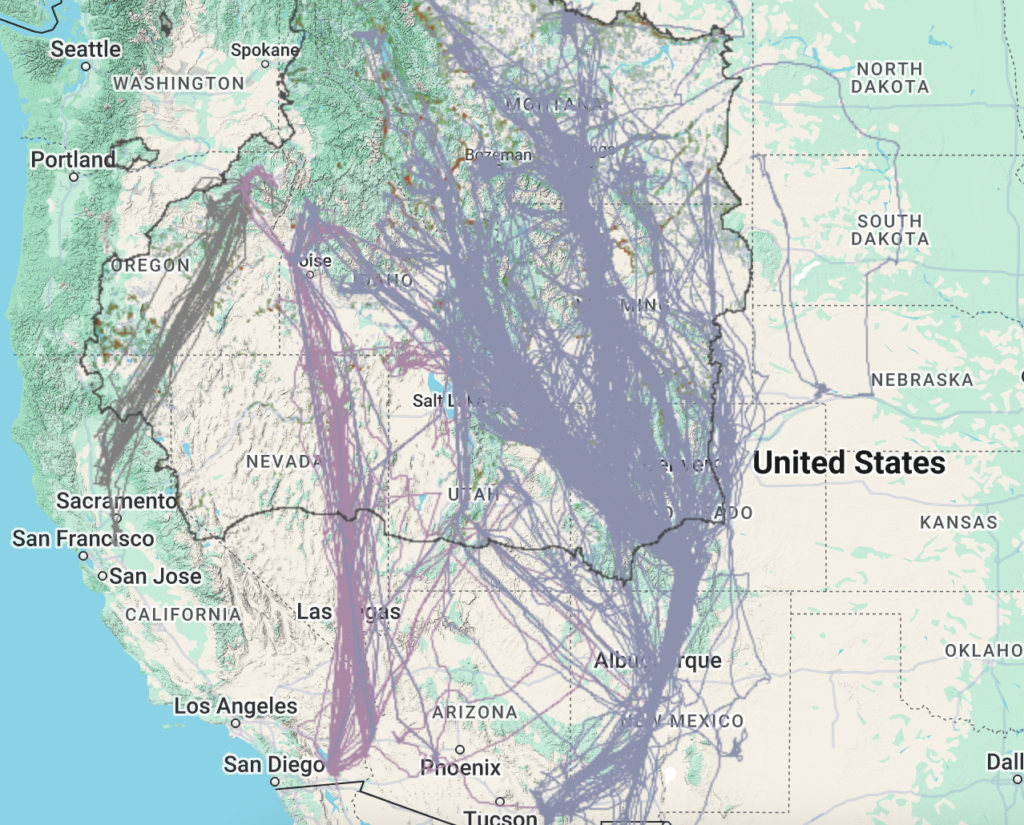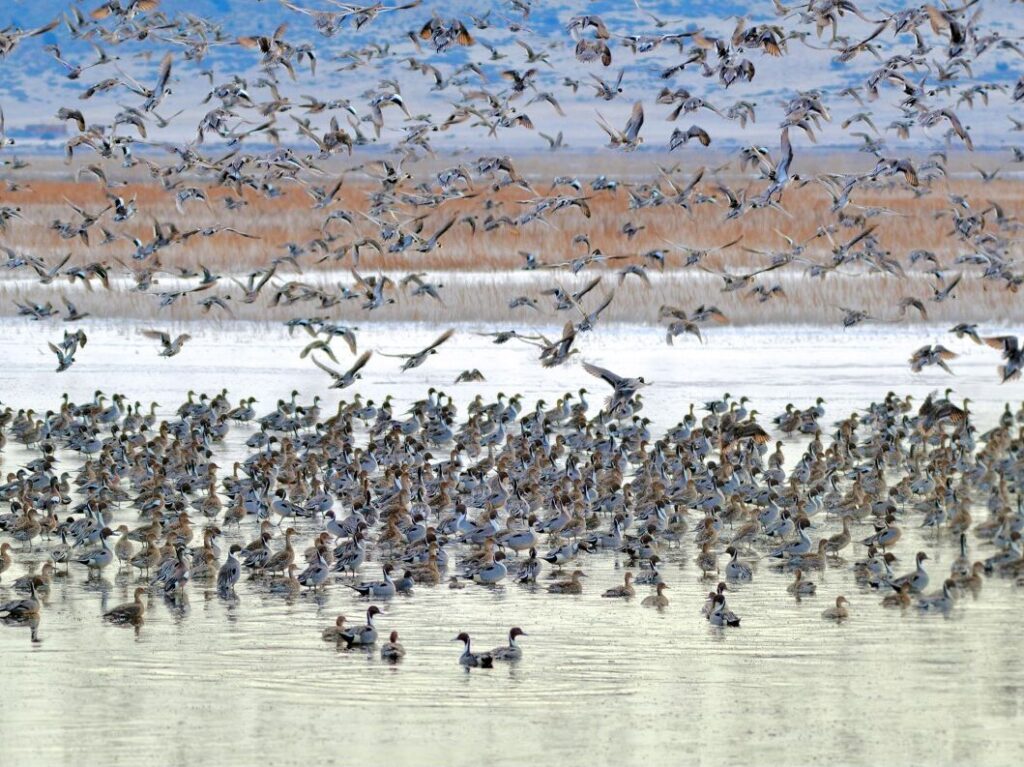Greater sandhill cranes are among the most iconic migratory waterbirds of western North America. Commonly considered seasonal harbingers, their movements throughout the predominantly rural landscapes of the Intermountain West are often celebrated with festivals and are timed with seasonal cycles important to agricultural communities.
Sandhill cranes are inextricably linked to ranching and working lands. Their annual life cycles are linked to water availability and hydrologic cycles, especially those provided by irrigated agriculture. Sandhill cranes spend winter months in the southwestern U.S. and northern Mexico. As they move between wintering grounds and breeding grounds in the Rocky Mountains and Northern Great Plains, they rely on a network of public and private stopover sites for food and shelter to fuel their annual journeys. Flood-irrigated grass hay provides 60 percent of the wetlands supporting breeding sandhill cranes in the Intermountain West.
DIVE INTO THE SCIENCE

Sandhill Crane Breeding Habitat
Flood Irrigation Supports Breeding Sandhill Cranes
This 2024 study pinpoints key summering and breeding habitat for greater sandhill cranes in the Intermountain West.
Visualize and apply the data
Access the Crane App
This app visualizes summering distributions and migratory pathways for the Central Valley, Lower Colorado River Valley, and Rocky Mountain populations of Greater sandhill cranes and their habitat in western North America.
User Guide
A user guide for this app intends to guide land managers through the science behind the data. Contact Tegan Hayes for more information.





